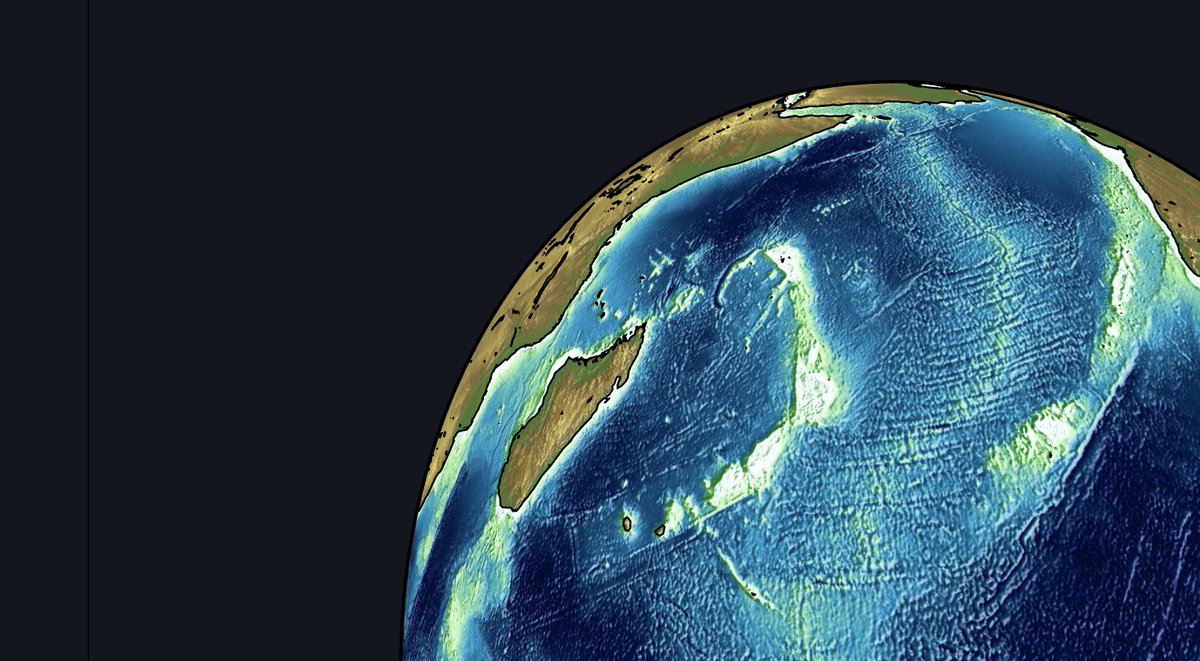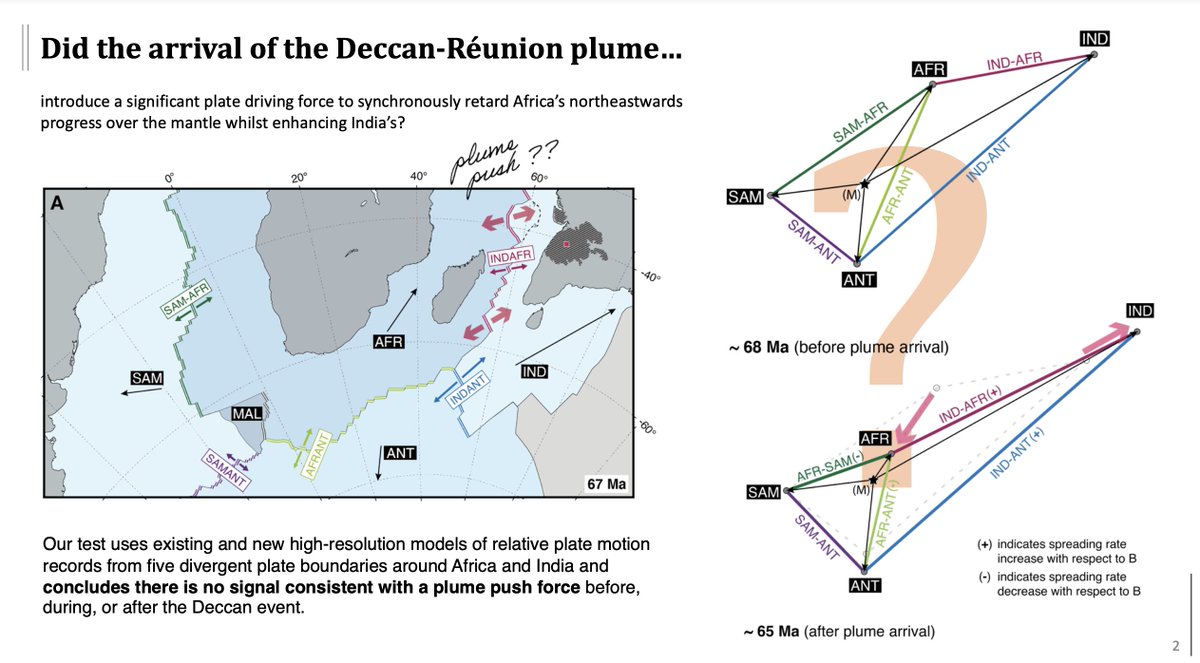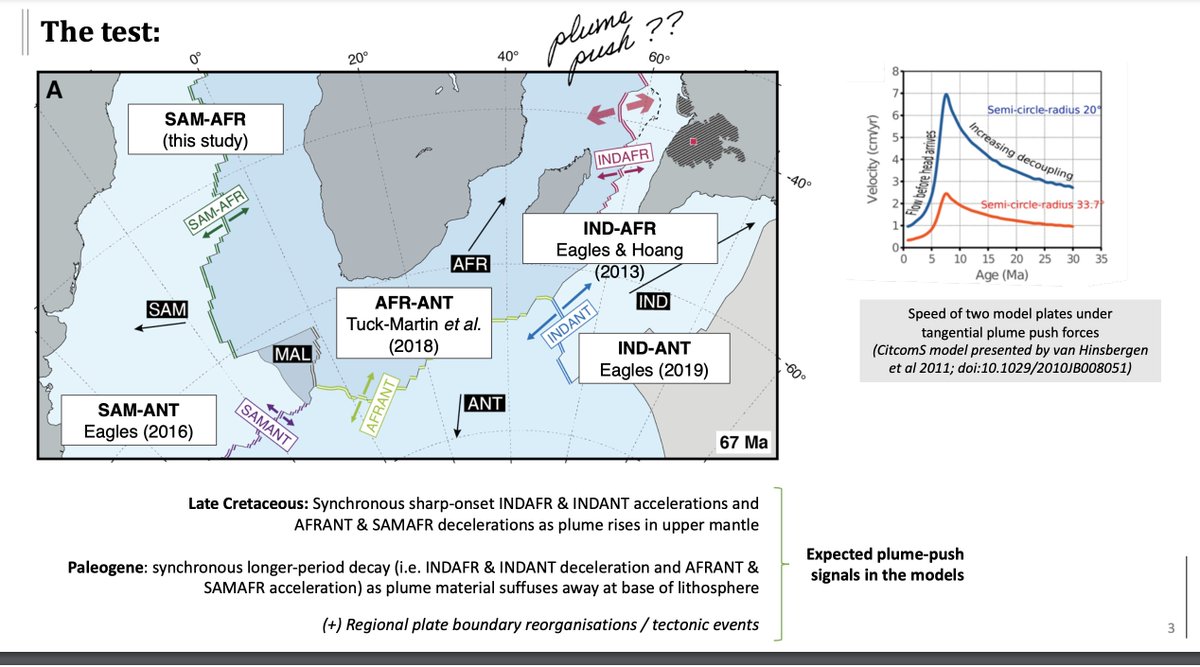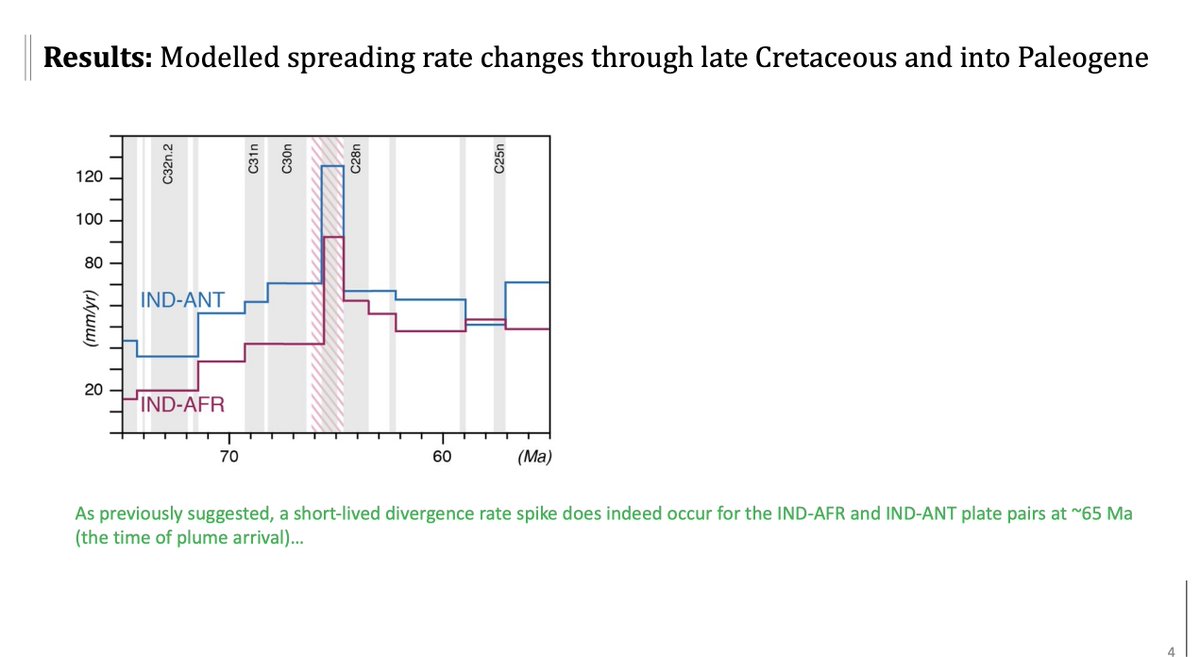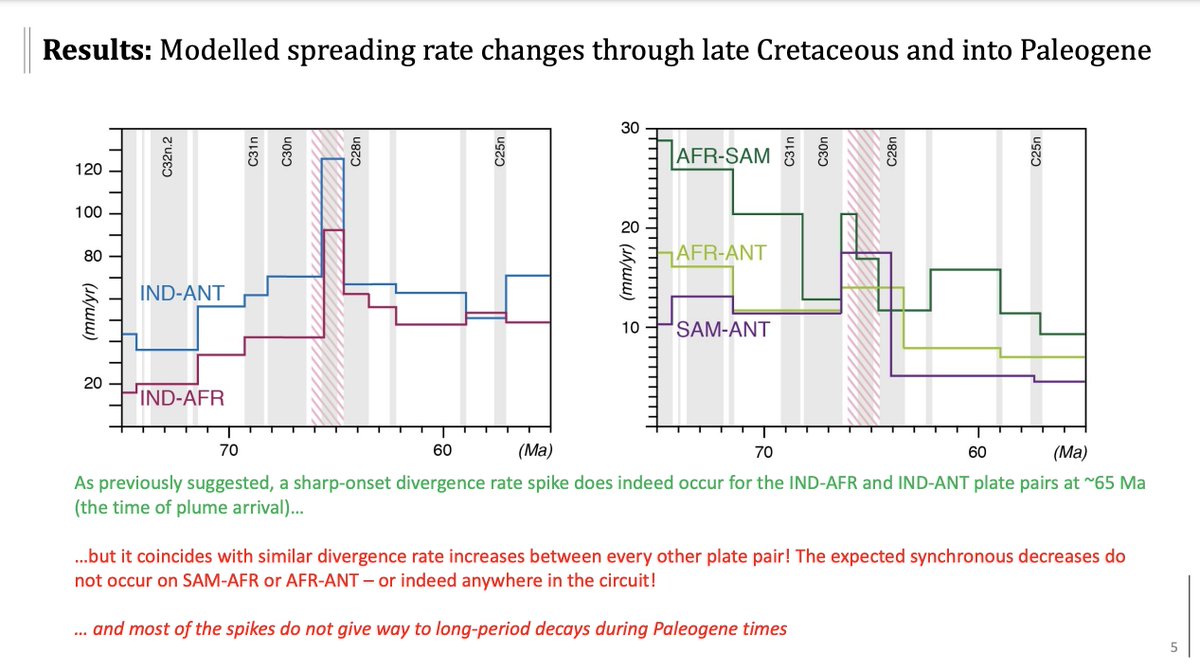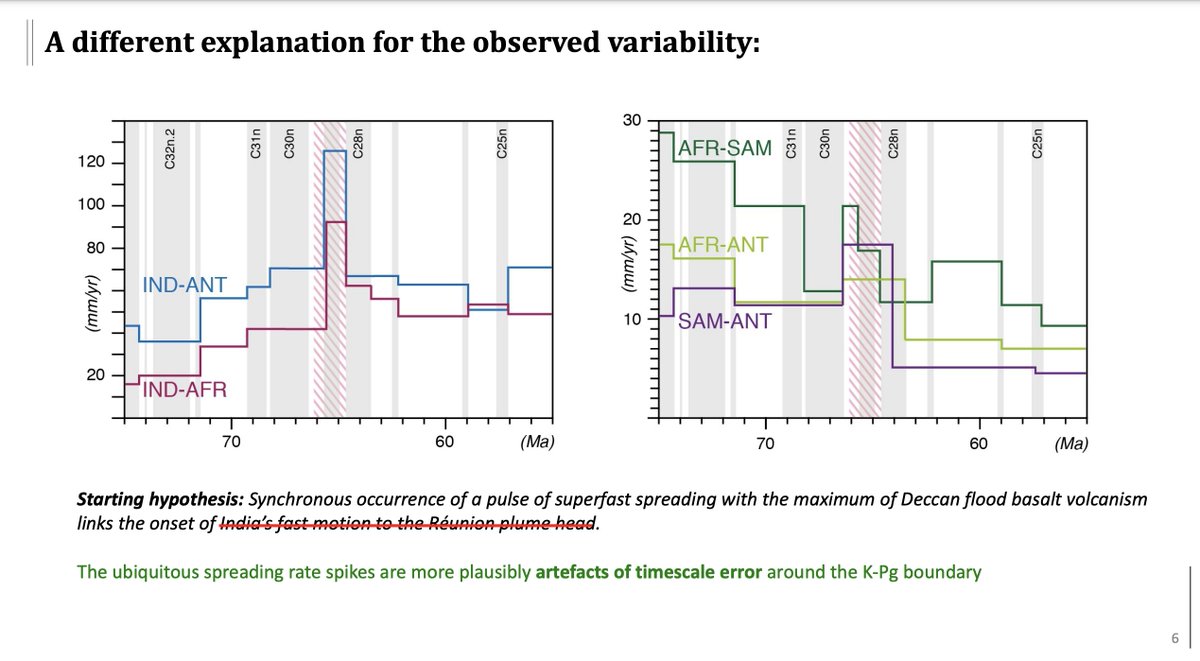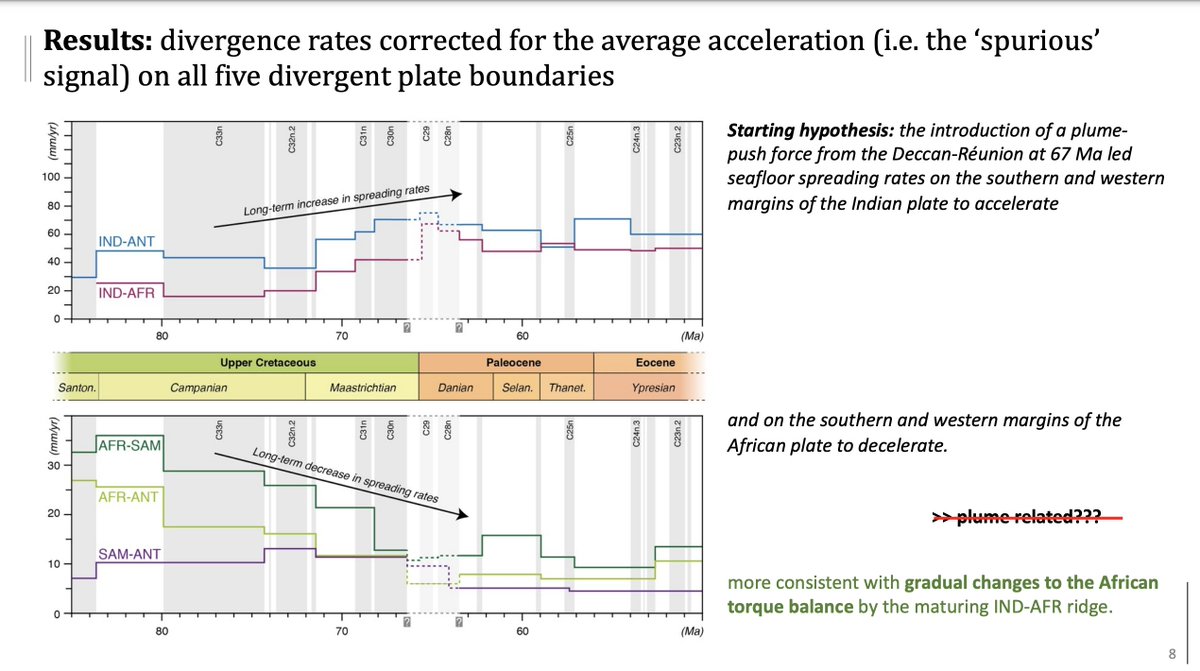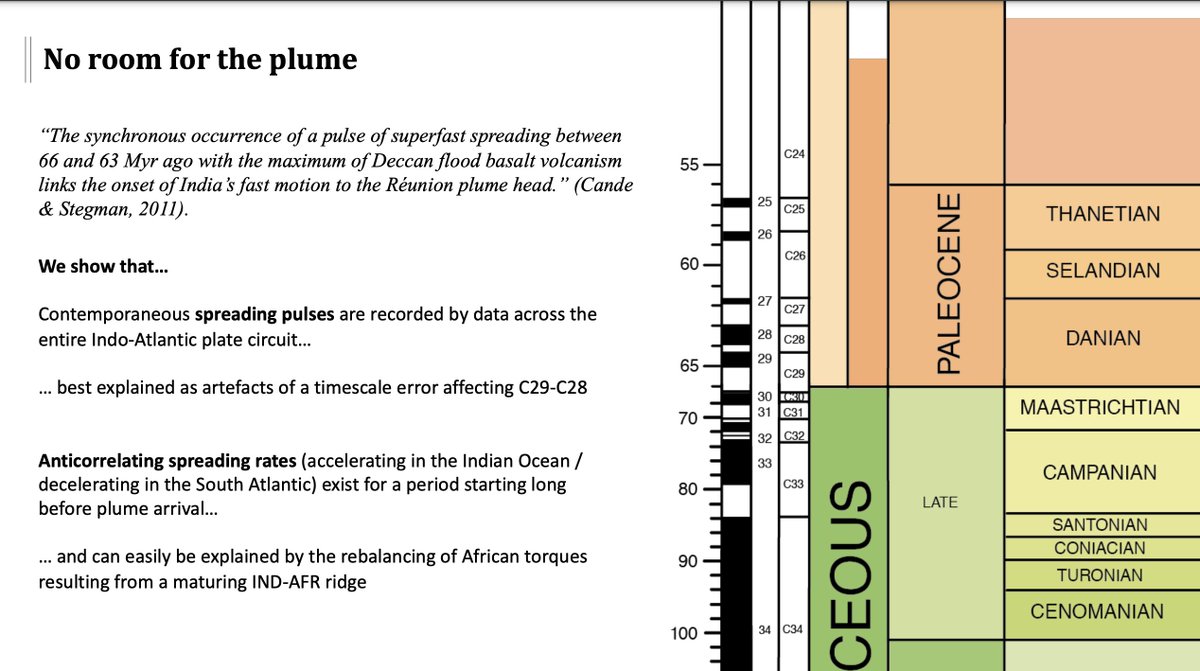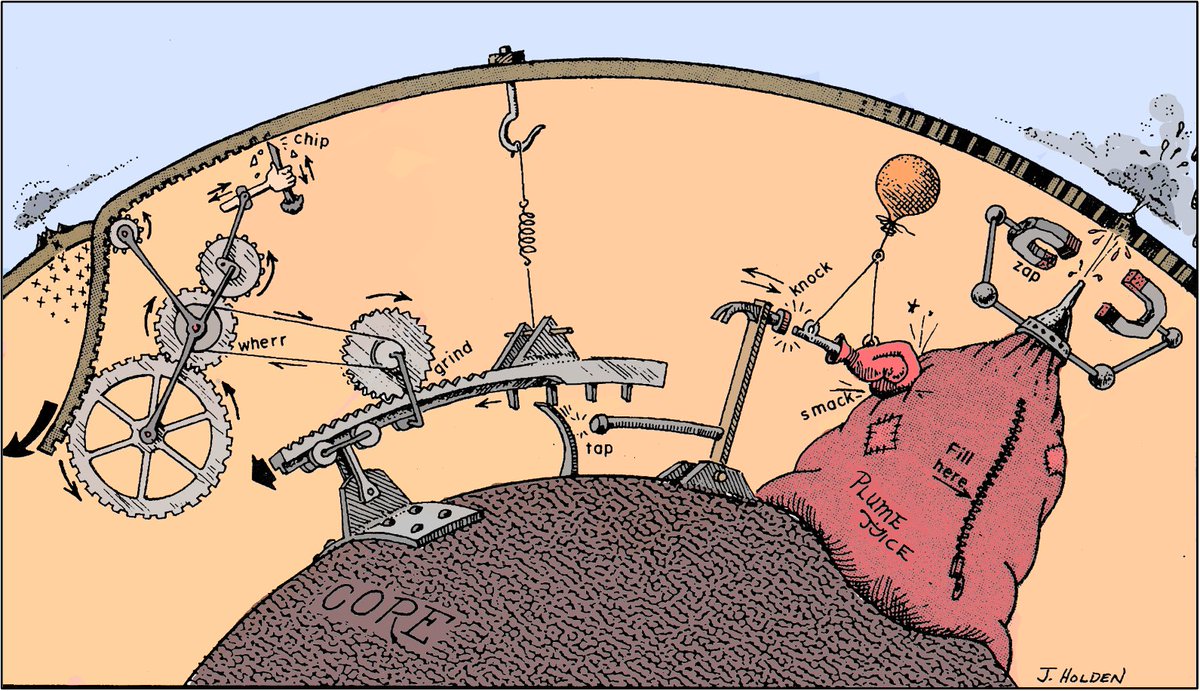Given that it was impossible to have a productive session at #vEGU21 this morning, here is a thread summarising the work we were hoping to present You can leave us comments in thread, or (if you can get it to work), here > #discussion">https://meetingorganizer.copernicus.org/EGU21/EGU21-8496.html?reply #discussion">https://meetingorganizer.copernicus.org/EGU21/EGU... @EuroGeosciences
The short version:
"Plume-push" hypothesis suggests that the arrival of plumes at the base of the lithosphere introduces plume-related forces capable of overwhelming entire plate circuits and triggering plate reorganisations. We show this hypothesis is flawed.
"Plume-push" hypothesis suggests that the arrival of plumes at the base of the lithosphere introduces plume-related forces capable of overwhelming entire plate circuits and triggering plate reorganisations. We show this hypothesis is flawed.
This thread is a short summary of:
our paper here (open access) > https://pubs.geoscienceworld.org/gsa/geology/article/48/12/1169/588493/Indo-Atlantic-plate-accelerations-around-the
our">https://pubs.geoscienceworld.org/gsa/geolo... Geoscientist piece > https://www.geolsoc.org.uk/Geoscientist/Archive/October-2020/Feature-1">https://www.geolsoc.org.uk/Geoscient...
our paper here (open access) > https://pubs.geoscienceworld.org/gsa/geology/article/48/12/1169/588493/Indo-Atlantic-plate-accelerations-around-the
our">https://pubs.geoscienceworld.org/gsa/geolo... Geoscientist piece > https://www.geolsoc.org.uk/Geoscientist/Archive/October-2020/Feature-1">https://www.geolsoc.org.uk/Geoscient...
and I also talk about it in my recent interview with @QuantaMagazine https://www.quantamagazine.org/the-new-historian-of-the-smash-that-made-the-himalayas-20210414/">https://www.quantamagazine.org/the-new-h...
Plume-push gained a lot of momentum after the suggestion that it was possible to see evidence for it in the behaviour of the African and Indian plates at the time of arrival of the Reunion plume
We tested the hypothesis by revisiting whether, coinciding with the arrival of the plume, high-resolution plate models of the Indo-Atlantic circuit are able to pick out the types of signals one would expect if plumes indeed introduced large, overwhelming push forces.
As previously suggested, the arrival of the plume coincides with a spike in spreading rates in spreading ridges surrounding the Indian plate. The Indian plate essentially seems to really put its foot down, accelerating northwards at this time.
Is that plume related? We don& #39;t think so. Spreading rate spikes appear in all other spreading ridges around the circuit (and, in fact, they are also present in the Pacific and North Atlantic oceans, not shown here)
What geodynamic process can cause simultaneous short-lived accelerations across all ridges, and that disappear as sudently as they appear leaving no trace of their action? We can& #39;t think of any. Instead, these observations are easy to explain in terms of a timescale error
When these artefacts are removed, the trends we observe are easy to explain simply on the basis of the gradual evolution of the Indo-Atlantic circuit, without the need for any additional forces (plume-related or not)
So, with this, we show that the main evidence put forward in support of plume-push is in fact an artefact of a poorly calibrated clock
As we move on to better understand the mechanisms behind plate motion, it is perhaps time to move away from "just blaming what we don& #39;t understand on the plume" :) #PlumePushIsDead #DontBlameThePlume

 Read on Twitter
Read on Twitter